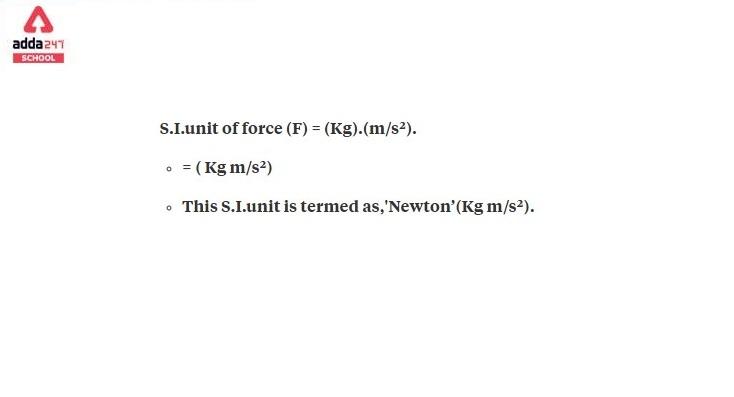Table of Contents
CGS Unit of Force
The CGS Unit of Force is Dyne. The CGS (Centimeter-Gram-Second) unit of force is known as the “dyne,” and it is defined as the force required to accelerate a mass of one gram at a rate of one centimeter per second squared. Symbolically, it can be represented as:
1 dyne = 1 gram * 1 centimeter per second squared
In the International System of Units (SI), which is the standard system of measurement used worldwide, the unit of force is the “newton” (symbol: N). To convert from dyne to newton, you can use the following conversion factor:
1 N (newton) = 10^5 dynes
So, 1 dyne is equal to 10^-5 newtons.
What is the SI Unit of Force
The SI (International System of Units) unit of force is the Newton, symbolized by “N.” It is named after Sir Isaac Newton, the renowned physicist and mathematician. One Newton is defined as the force required to accelerate a one-kilogram mass by one meter per second squared. In equation form, this is expressed as:
1 N = 1 kg m/s²
Unit of Force
It represents the force needed to change the velocity of a one-kilogram object by one meter per second every second.
Force is the external change in motion of any object. When applied to an object in the stationary state it will come to motion and if it is in motion it will come in a stationary state.
For example- when a bucket is thrown into the well, the bucket which was in the stationary state will come into motion and when it is pulled back into place the bucket will come into the stationary state after being in motion.
SI Unit of Force is
unit of force is the newton, abbreviated as “N.” It is named after Sir Isaac Newton, a renowned physicist who made significant contributions to the understanding of force and motion. One newton is defined as the force required to accelerate a one-kilogram mass by one meter per second squared (1 N = 1 kg m/s²).
| SI unit | Unit | Symbol |
| Meter | Length | m |
| Kilogram | Mass | Kg |
| second | Time | s |
From this, we get to know,
SI unit of power is Newton (N).
And 1N is defined as the rate of change of force, at a constant weight and constant speed.
SI unit of Force is Newton.
1N= 1 kg m / s2
The most common formula which was researched by Isaac Newton, states that force applied to any object is equal to the acceleration with which it moves and the mass of the object.
Unit of Forces- Types
There are various types of forces like gravitational force, frictional force, nuclear force, etc. let’s define all the different types of forces mentioned here.
- Gravitational Force – It is also known as the attractive force between two separate bodies. Gravitational force is directly proportional to the mass of the object and it is inversely proportional to the square of the distance between the two objects.
The formula for gravitational force
F= G , m1 and m2 are two bodies
F is the gravitational force
r is the distance between the two bodies
and G is a universal constant, the value of G = 6.67 x 10-11
- Frictional Force- it is the resistive force, which is caused by the sliding of two objects. Friction always acts opposite to the direction of the motion. it depends on the texture of the surface and the force applied to both the objects.
The formula for Frictional Force-
F= µN
F= frictional force
µ= Coefficient of static friction
N= Normal force
- Nuclear Force- The force that holds the nucleus together. The nuclear force binds the proton and neutrons together in the nucleus. The force bonds proton to proton, proton to a neutron, and neutron to neutron.
What are the effects of the force?
- The force applied to any object will come into motion or any stationary object will come into motion.
- The force applied to any object will change the direction of the object.
- The force applied to any object will change the size and shape of the object.
- The force applied to any object will change the speed of a moving or a stationary object.
Related Articles:



 NBEMS NEET PG 2025 Registration (Active)...
NBEMS NEET PG 2025 Registration (Active)...
 CUET UG Exam Date Sheet 2025 @cuet.nta.n...
CUET UG Exam Date Sheet 2025 @cuet.nta.n...
 UP, MP, CBSE Board Result 2025 Live Upda...
UP, MP, CBSE Board Result 2025 Live Upda...










